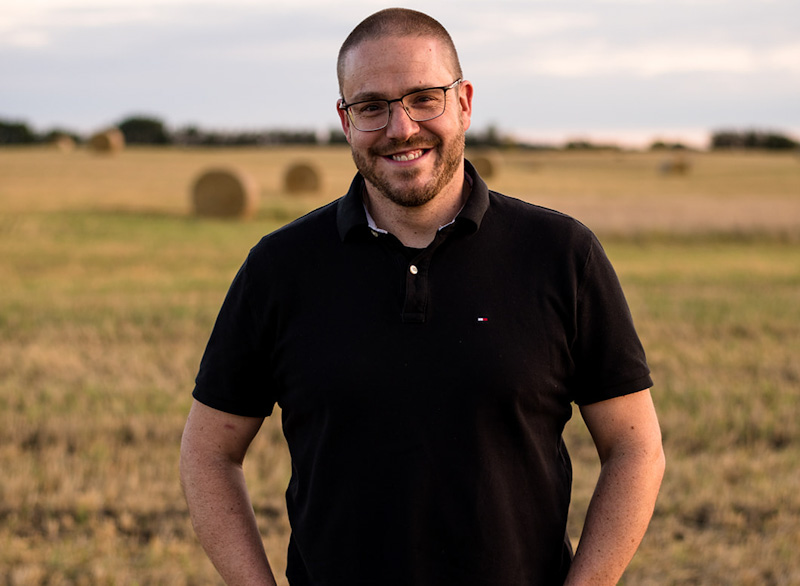Anywhere you go that hockey is played, the number 99 is synonymous with greatness. The number 99 was the number that belonged to Wayne Gretzky, who is universally recognized as the greatest player to ever play the game.
Here in Edmonton, where Gretzky won four Stanley Cups and achieved incredible milestones, hockey fans treasure 99 even more than others. This is why statue of Wayne Gretzky was erected outside Northlands Coliseum – while he was still playing in the league – and upon his retirement the road outside that arena was re-named in his honour. These signs are a reminder of what we often call “the glory years” of Edmonton Oilers hockey and a crowd tends to gather around Wayne Gretzky not only in Edmonton, but anywhere that hockey fans happen to be.
You might make a comparison here with the way in which both we as Catholics and our world see the Pope. There is no one who is more closely associated with Catholicism than the Pope. St. Ambrose of Milan said that “Where Peter is, there is the Church.” In the same way as people associate 99 with Wayne Gretzky, the Pope’s white cassock, his tall mitre, and the Popemobile are all reminders to them of Catholicism (and whatever that might signify to them). And so wherever he goes, he is often welcomed like a celebrity. The thing is that the Pope is supposed to be more for us than just a Catholic celebrity or a reminder of the Church. He has a role to play in our lives as Catholic Christians which we can begin to understand when we take a closer look at some of the titles we give to the Pope.
The Pope is called the “successor of St. Peter.” This is because, in the Gospel of Matthew following Simon’s confession that Jesus is “the Christ, the Son of the living God” (Matthew 16:16), Jesus replies:
“…you are Peter, and on this rock I will build my church, and the gates of Hades will not prevail against it. I will give you the keys of the kingdom of heaven, and whatever you bind on earth will be bound in heaven, and whatever you loose on earth will be loosed in heaven.” -Matthew 16:18-19)
It is at this moment Jesus changes Simon’s name to Peter. This is an echo of earlier moments in the Bible when God changed others names: Abram & Sarai became Abraham & Sarah (Genesis 17) and Jacob became Israel (Genesis 32). On each occasion, the new name came along with a new calling for their lives. This is also true of Simon Peter. Peter’s calling was to guard the teachings of Christ, to serve as a point of unity for the followers of Christ, and to assume a role of leadership over the Apostles and the whole Church. And this calling was not just for St. Peter himself. Following Peter’s death (somewhere between 64-68 AD) St. Linus became the second Pope, and that authority has been passed on to this day. Pope Francis is the 267th Pope to lead the Church since the death and resurrection of Jesus 20 centuries ago.
One important thing to keep in mind is that the Pope is not the president or CEO of the Catholic Church, who is autonomous to do whatever he wants with the Church. You may have heard the pope referred to as the “Vicar of Christ.” A vicar is someone who serves as a substitute or agent in place of someone else in authority. He is a steward who cares for someone’s land, titles, and possessions during the time they are away, like a substitute teacher in a classroom. A good vicar, steward, or substitute puts their whole heart and energy into whatever it is they are caring for, always remembering that it is not theirs. but they always remember it isn’t theirs. It’s not for the pope to make up or to change Church teaching – but instead to watch over the Church, what the Church teaches, and her members … and when he dies, the Pope will have to give an account of his stewardship (cf Luke 16:2).
Next week, Pope Francis will be in our diocese. This is a unique opportunity and the first time since World Youth Day 2002 that any Pope has been to Canada. But we need to remember that this isn’t the visit of a Catholic ‘celebrity’ – the Holy Father described this visit as a Penitential Pilgrimage to our country.
The Gospel of John describes to us that scene where Jesus, prior to the Last Supper, got down on his hands and knees and washed His disciples’ feet (John 13). He told them they “ought to wash one another’s feet. For I have set you an example, that you also should do as I have done to you” (John 13:14-15). It is in keeping with that example, first shown by Jesus to St. Peter and the others, that Pope Francis is coming “in the name of Jesus to meet and embrace the indigenous peoples.”
As we welcome the Pope to Canada, let us remember that he comes as the successor of Peter and as Vicar of Christ to be an instrument of healing. Let us all pray, not only for Pope Francis and his health, but most especially for our indigenous brothers and sisters that he is coming to embrace.
Landry is chaplain to Evergreen Catholic Schools west of Edmonton, and serves as an occasional guest speaker and music minister in communities across Western Canada. Mike and his wife Jennifer live in Stony Plain, Alta. with their five children.

